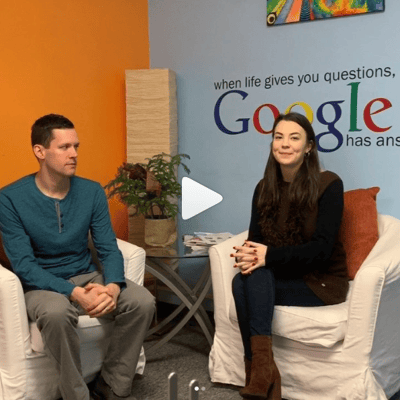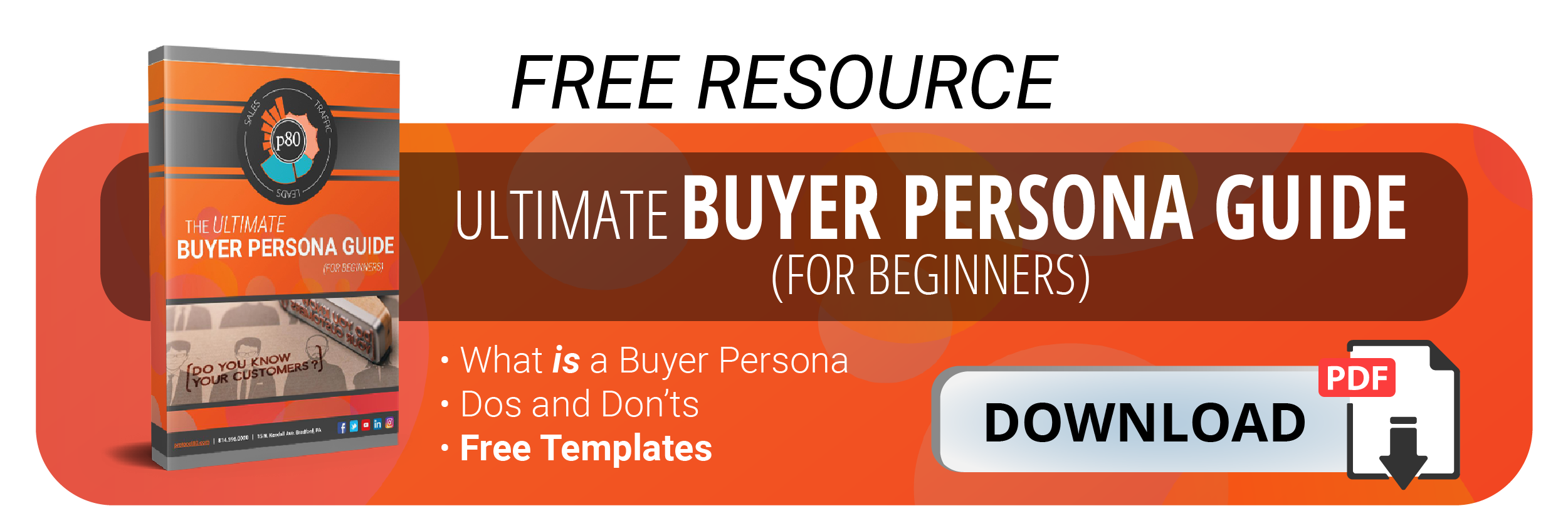Inbound Marketing Blog
for Manufacturers and Healthcare Companies
6 Ways to Write to a B2B Audience Persona
Before you start writing blogs, before you even start an inbound marketing campaign, you need to know who your audience is and how to talk to them. If you’re not truly speaking to them, you may as well be talking with a mouthful of crackers.
Writing to a defined target audience:
-
Improves engagement
-
Increases lead conversion rates
-
Gives current customers a more satisfying experience (leading to future sales opportunities)
Personalized writing is especially helpful when aiming at a B2B target audience. A B2B audience persona will probably be a lot more focused than customers of Wendy’s or Barnes & Noble.
Sounds like a perfect opportunity to hone your storytelling. Follow these steps and your prospects will believe you’re whispering directly in their ears (in a non-creepy way).
6 Tips for Writing to a B2B Audience Persona
1. Get to Know Ernie the Engineer.
You do have a buyer persona, right? If not, make one immediately. Give him or her a name. This fictitious character represents your ideal customer.
Does your company sell to multiple personas? For example, a manufacturer of metal components might sell both to OEM engineers and to architects -- two very different types of people. If this sounds like your customer base, keep ’em separated.
Marketers who define target audience personas up front have a huge lead in the race to win over customers in the long game known as B2B sales cycles.
Ask your sales team what questions or issues they’re hearing most often from prospects. Interview current customers to get their side of the story -- your idea of what matters most to your customers may differ from what they feel is most important.
Finding your audience’s pain points and empathizing with them is a great way to speak their language. Ideally, your marketing efforts will offer education and solutions to those pain points.
2. Acknowledge that your readers exist.
Feel free to break all the rules of your old composition classes and write in the second person. Using “you” makes it seem like you’re talking directly to the reader.
You can also refer to their industry and lifestyle -- all information you hopefully obtained during buyer interviews and persona constructing.
Ex.: “Poorly communicated design specifications can be a time-waster for engineers and purchasing agents who’d rather spend their weekends watching their kids’ baseball games.”
3. Know their motivation.
What’s your ideal customer’s story? Her motivation? Here are some examples of emotions you can ignite in readers:
-
Fear
-
Excitement
-
Curiosity/eagerness to innovate
Let’s use a fear example. A medical cleaning device supplier might want to show the fatal effects of dirty hospital rooms. Very effective -- just don’t be dishonest or overpromise.
4. Meet them where they are.
To get an idea of how your prospects think and talk, meet them where they are.
Check out Facebook and Reddit -- or wherever your buyer persona research points you. Interview your ideal customers and pick their brains about their interests and favorite educational resources.
As for the medium … are your prospects frequently on the go and don’t have time for long, highly technical posts? Is the subject matter best explained with supplementary visuals (i.e. photos, videos, and infographics)? Think about how to speak to them in the manner they prefer.
It’s not just a matter of literally where and how they spend their time. Where are they at in the buyer’s journey? Shilling your brand can be a big roadblock to generating leads if your audience is nowhere close to being ready to buy.
Finally, is your audience full of advanced learners, or are they mostly newbies who need hand-holding? Don’t talk over the heads of newbies with confusing industry jargon.
5. Make the language match the audience’s
Writing to owners of tow truck fleets? They probably won’t get or appreciate fancy, fluffy, or sappy language. This can be the difference between engaging an audience or having them leave your webpage in 6 seconds.
(Ex: This blog post doesn’t use wonky industry terms like BoFU content, long-tail keyword, or click-through rate because we don’t want to scare you away.)
On the other end of the spectrum, audiences of architects or furniture designers may appreciate your dressed-up prose. You have the creative license to write with more sophistication in these cases.
When your buyers talk to you, how do they do it? Are they professional, casual, a little humorous, or a little technical? This should be the basis for your own word usage.
One helpful exercise is to write down a bunch of words that best describe your product or service. Whittle those down to the best 10 or so and keep them in mind when writing marketing material. For example, for an architectural company you might think:
-
Uniqueness
-
Trend-setting
-
Customization
-
Potential
-
Futuristic
-
Historic
-
Execution
-
Emerging
-
Remarkable
-
Enduring
-
Refined
This will help you set the tone for your articles. Just make sure your vision of your products matches how the audience seems them.
6. Use These Rules on Social Media, Too
Be mindful of the way you speak on social media, too -- both to faithful followers and to people new to your brand. Tone should be at least somewhat consistent with your blog writing, email writing, and video creation (although social media posts can be a little more relaxed).
To complicate matters, audiences can differ from one social platform to the next. For example, the more boots-on-the-ground engineer may hang out on Facebook, while purchasing agents tend to use LinkedIn as their watering hole. Also, LinkedIn frequenters are less interested in your emojis and other superfluous stuff.
Seriously. It’s All About the Buyer Persona.
To summarize:
-
Write to your audience -- or, more accurately, speak with your audience. You want to foster conversation and trust, not spew a bunch of selling points to them.
-
Don't litter your blog with 13-letter words if you're addressing engineers who are more mechanically savvy than they are English masters.
-
If you’re struggling, refer to your buyer persona and the places they hang out the most.
To learn more about crafting a buyer persona that truly encapsules your B2B target audience, check out the e-book below.
Our Blogs, Direct to Your Inbox!
How to Audit your Online Marketing
If you are executing digital marketing, congratulations! You are most likely already one step ahead of your competition, and making strides to meaningfully connect with prospects online. But, how do you know if you’re seeing continual success year over year, and improving your metrics?
Without the tools in place to analyze and benchmark your efforts, it is impossible to scale your online marketing and ensure continuous success.



